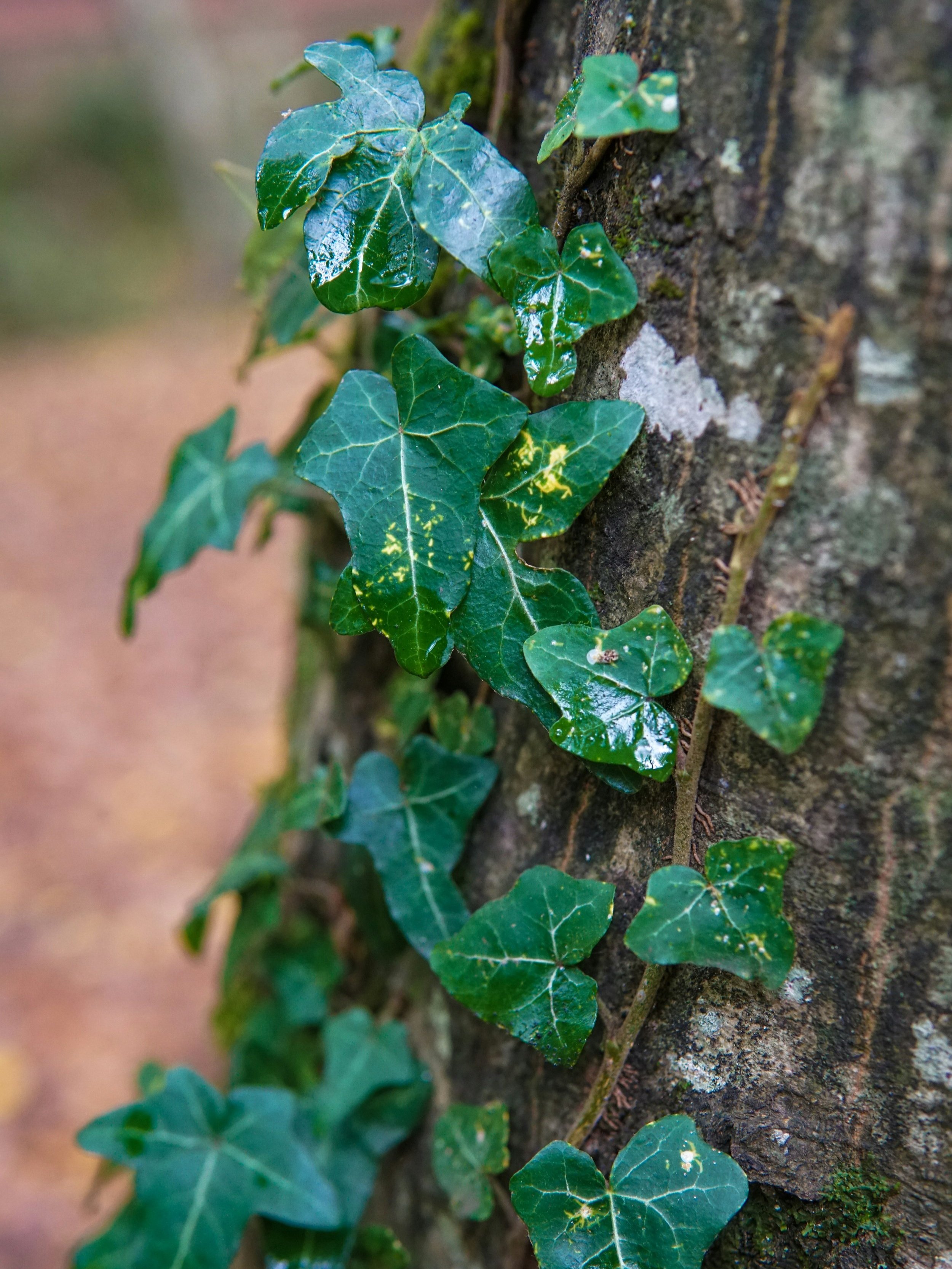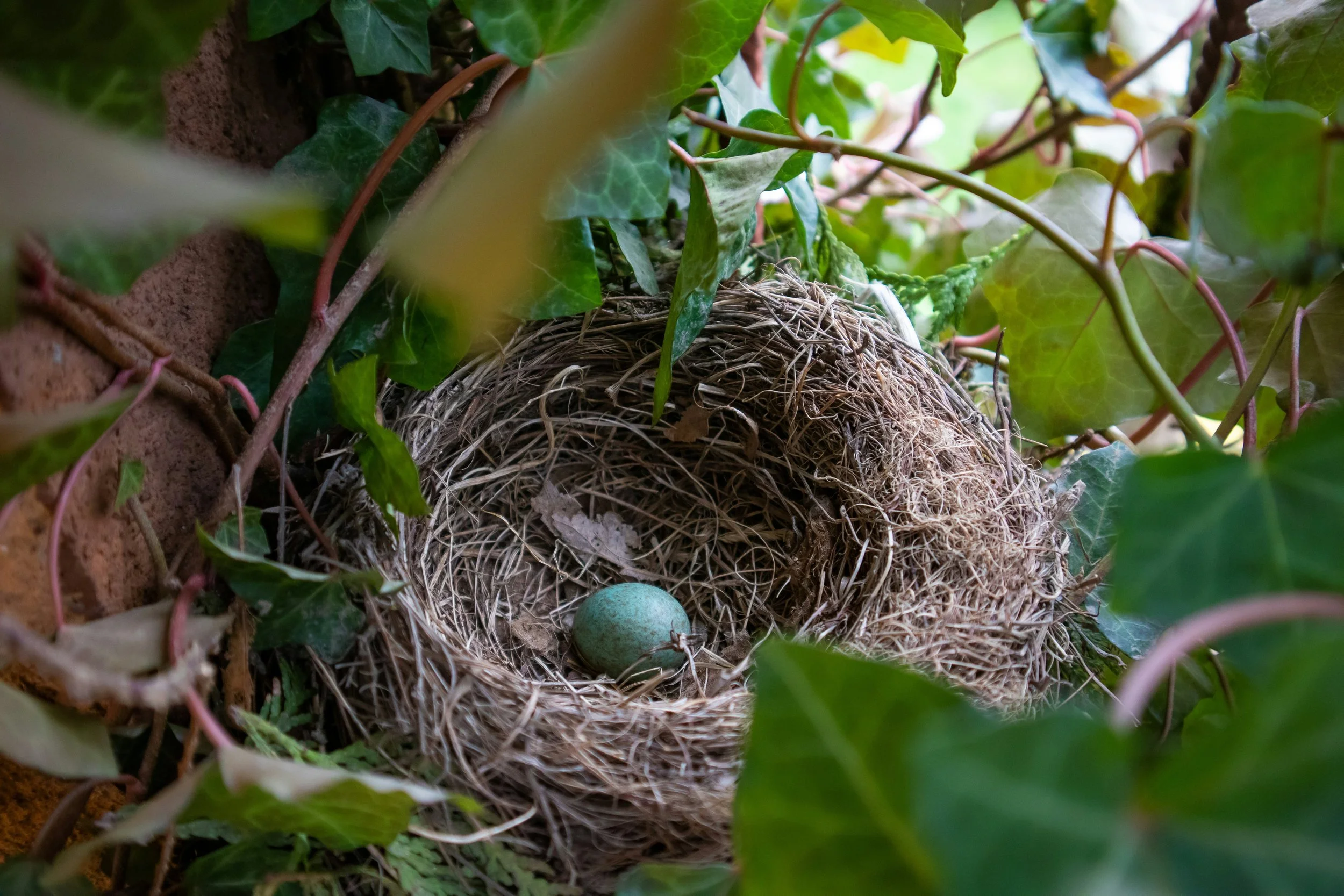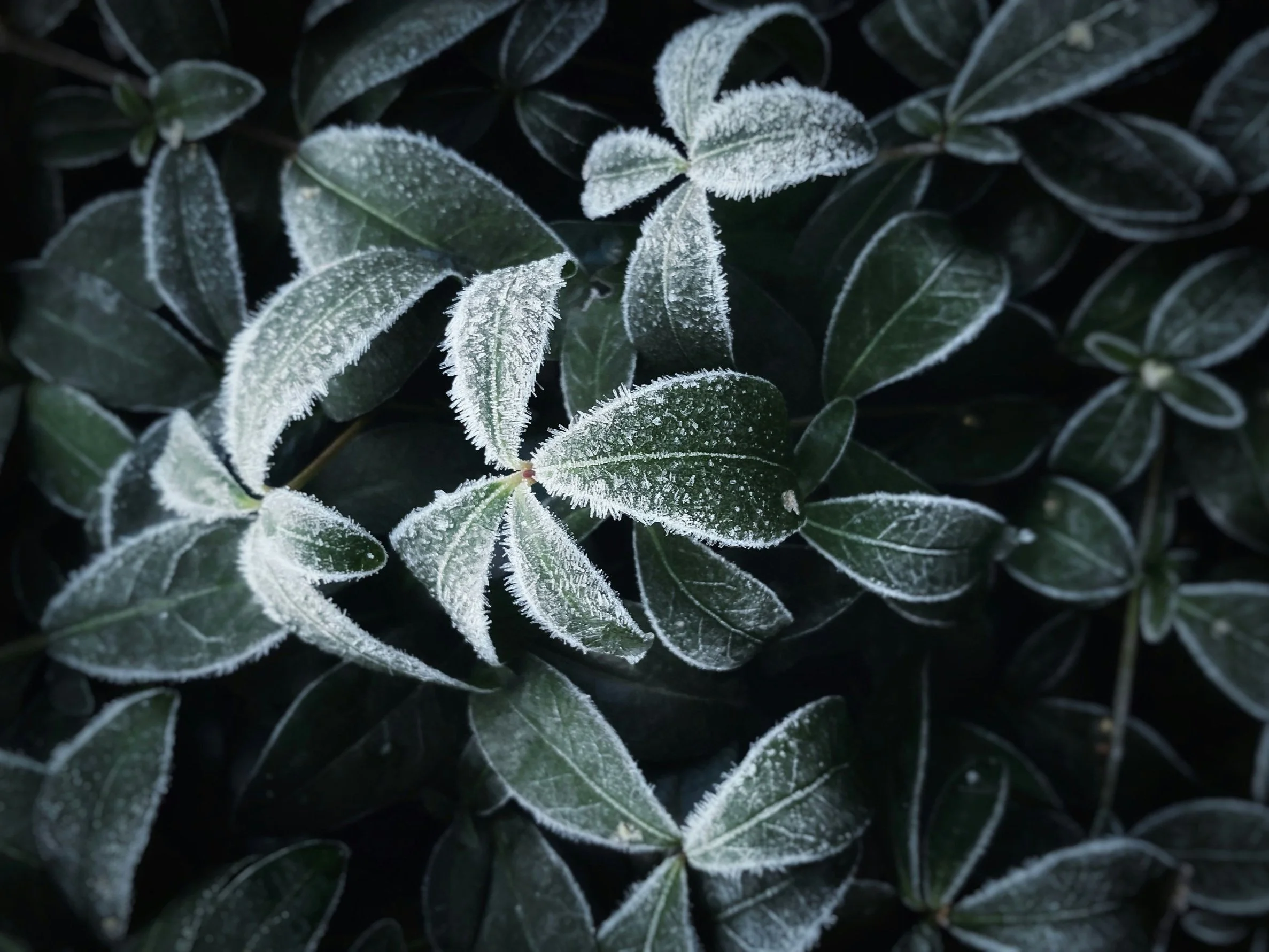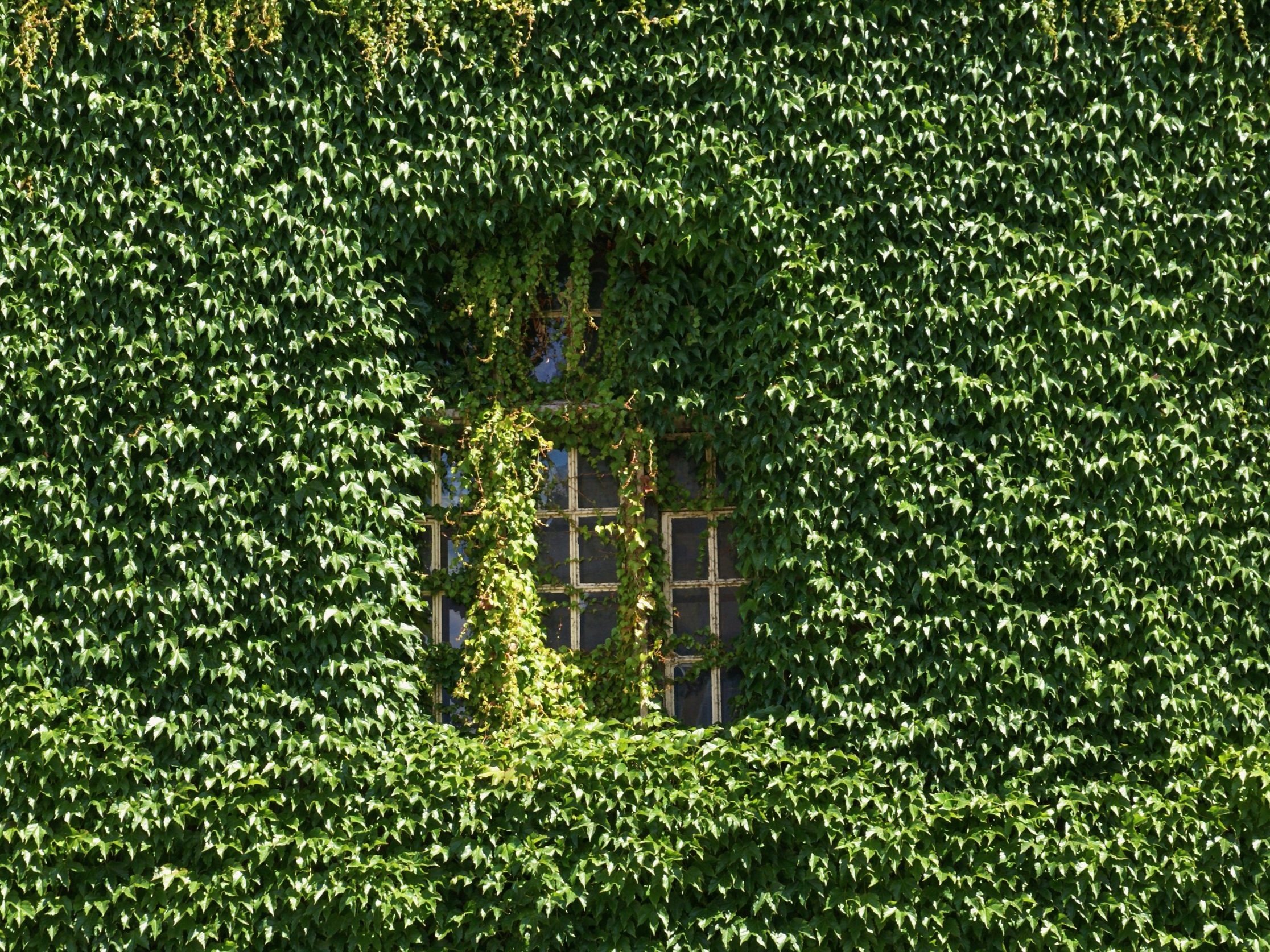Ivy does not kill trees: debunking the myth
A single ivy vine climbs a tree trunk in a shaded woodland. The vibrant green leaves stand out against the dark bark, with the surrounding forest fading into deep shadow.
The green embrace
You walk through an old woodland and see it there — the ivy, spiraling up the trunks like green smoke, clinging with a tenacity that seems both loving and sinister. You may have heard the stories: ivy, the strangler, the smotherer, the thief of light and life. You may have seen it called a parasite, a scourge to be ripped from bark and bough before it swallows the tree whole.
But look again. Let the eye linger. There’s a different story here — older, softer, and truer than the myth of ivy the killer.
Close-up of glossy English ivy leaves climbing the textured bark of a tree. The ivy’s aerial rootlets cling gently, with no sign of damage to the tree, highlighting a harmonious coexistence.
This is a story of cohabitation. Of green upon green, root beside root. It is a tale of mistaken identities and misunderstood alliances, of life in the understory and on the bark-skin of trees.
For ivy — Hedera helix — is no murderer.
The myth of the strangler
It is easy to see why the myth took root. Ivy climbs, and its method of ascent can seem unnervingly aggressive. Aerial roots burrow into bark crevices for anchorage. Vines thicken with age and spiral upward, sometimes so densely that the host tree appears cocooned in a leafy shroud. In winter, when most trees stand bare, ivy remains. Evergreen and tenacious, it’s a rare sign of vitality in a sleeping wood.
But this climbing is not strangling. Ivy is not a liana like the tropical strangler fig; it is no parasite drawing sustenance from the host. It does not puncture the vascular system of trees or feed off their nutrients. It grows beside them, not within.
The fear comes from a slippage in perception: a healthy tree covered in ivy falls, and ivy is blamed. In truth, ivy is opportunistic. It favors trees already stressed — by age, pollution, compacted roots, drought. It flourishes in the sun-exposed canopy when the tree thins or dies. Ivy is the companion at the bedside, not the cause of death.
We project drama onto plants, imagining motives where none exist.
The shelterer of life
If you stay long enough beside a tree clothed in ivy, you'll begin to notice its tenants. Birds thread twigs into its dense mesh for nests, safe from predators. Wrens, robins, thrushes — all find refuge in its evergreen shelter, especially when leaf-fall leaves the woodlands bare.
A small bird’s nest tucked into a thick tangle of ivy vines, cradling a single pale blue speckled egg. Ivy leaves surround the nest, providing natural shelter and a sense of safety within the green foliage.
When winter gnaws at the land, ivy offers berries rich in fat — a last resort food that tides blackbirds and wood pigeons through the hunger months. Its flowers come late in the year, blooming when little else does, feeding bees and hoverflies on the cusp of autumn.
And in this green thicket, insects nestle. Spiders string webs across its shade. Moths lay eggs among its leaves. Bats roost in ivy-draped trees, concealed from day.
It is a vertical habitat — a second forest on the tree's skin.
We have a lot to learn
In a world quick to judge and prune, ivy reminds us to stay a moment longer — to see more slowly. We are a species eager for control. We flatten complexity into binaries: useful or harmful, native or invasive, alive or dead. But nature resists such cleaving. It speaks in nuance, and ivy is fluent in it.
Where others see encroachment, the observant eye sees symbiosis. Ivy shelters the vulnerable, offers sustenance in scarcity, and swaddles the exposed. On ancient oaks and city walls alike, it becomes a living bridge between the human and the wild.
We have forgotten how to be still enough to notice. The murmurs of ivy, rustling against bark in the wind — they are invitations, not warnings. What we call wildness is often resilience in disguise.
Of energy and insulation
What happens when ivy covers a tree is not what most imagine. It doesn't steal the tree's light unless the crown is already sparse, already suffering. It clings to trunks and lower limbs, rarely scaling to heights where it might truly cast shadow.
What it offers, instead, is insulation. A barrier from wind-scour. A quilt against frost. In regions where winters bite hard, the layer of ivy can protect bark from cracking, and buffer temperature extremes that damage cells. It becomes a skin upon a skin.
Close-up of dark green ivy leaves dusted with frost crystals, their edges lined in white, forming delicate star-like patterns. The scene captures the stillness and resilience of ivy during the cold of winter.
And what’s more — it slows the loss of water. Trees losing bark moisture in dry, cold spells retain it better when wrapped in ivy’s green. This hidden service, this quiet caretaking, escapes notice. But it matters.
Even in death, when the host tree finally collapses, ivy carries on — rooting into the wood, accelerating its return to soil. It is both witness and weaver of the next succession.
Ivy and the soil beneath
Drop your gaze to the forest floor, where the ivy creeps like green tide. This is where another of its gifts lies: in the land itself. Its leaves, rich in nutrients, fall and decay, composting into the soil. Each leaf a quiet offering.
Its roots bind the earth, preventing erosion on slopes and embankments. In storm and flood, they slow the rush of water, helping land hold its shape. This matters more and more in an age of extreme weather.
Where ivy thrives, fungi thrive too — mycorrhizal networks braid through the soil, connecting roots of different species in silent communion. Earthworms move more freely through the loosened soil. Seedlings find softer ground.
Ivy is not a solitary actor; it is part of a vast ensemble.
From stewardship to kinship
To defend ivy is not merely to correct a botanical misunderstanding — it is to shift the way we relate to the living world. We have inherited a language of dominance: we manage, we control, we remove, we tidy. Even our so-called "stewardship" often echoes the logic of empire — a belief that nature must be governed.
But ivy resists neatness. It sprawls. It clings. It returns. It does not stay in its lane, and in doing so, it reminds us that the world is not ours to police.
When we stop asking what a plant does for us, and start asking what it does in and of itself — for others, for the soil, for the silent world of beetles and spores — we move from stewardship to kinship.
Kinship is harder. It means living with mess, and admitting that what looks like disorder may in fact be the most exquisite form of organization. Ivy teaches us this. Its tendrils trace the paths of interdependence. Its clinging is not conquest — it is belonging.
The old tongue of Ivy
There is a reason ivy haunted the margins of medieval manuscripts and crept around the heads of Roman gods. In ancient Britain, it was a plant of the in-between: neither entirely earthbound nor fully sky-reaching. Ivy belongs to thresholds — of time, of season, of life and decay.
Its very nature resists linearity. Ivy curls, loops, repeats. It does not march forward — it turns back on itself, knots history into bark and stone. On churchyards and castle walls, ivy becomes a kind of memory — vegetal and persistent.
The Druids knew it as a symbol of the spiral — the inward path to knowing. In folklore, it bound together lovers and kept spirits at bay. It was carried at funerals, twisted into rings, draped in winter houses as a promise: that green would return.
We’ve inherited these stories, even as we forgot their roots.
To walk beside ivy is to walk beside something old, and very much alive.
A companion in collapse
In the Anthropocene — this era of tipping points and unraveling ecologies — ivy is a survivor. It thrives where other species retreat: in cities, on brownfields, along the backs of abandoned lots. Its ability to root in mortar cracks and climb derelict façades is often framed as invasive or unruly.
A dense curtain of green ivy completely covers a building façade, with only a single window partially visible beneath the foliage. Not an invader, but a companion — ivy wraps the human world in green.
But maybe what we’re seeing is not incursion, but endurance.
Ivy teaches us how to live through collapse — not with violence, but with tenacity. It takes what's broken and clothes it. It shelters the still-living in places no longer hospitable to most.
In post-industrial ruins, where soil is thin and shade long, ivy still finds purchase. Where birds have no hedgerow, ivy becomes the hedge. Where insects lack nectar, ivy flowers late, holding out a hand across the hunger gap.
We might call it opportunistic. But in a world of vanishing options, opportunity is life.
The sound of green
There is a sound to ivy, if you listen.
It is not the rustle of oak leaves, not the dry gossip of birch, nor the sigh of fir. Ivy whispers closer to the ground — a faint creaking when the wind tugs at its runners, a subtle brushing as it touches tree bark in passing. It is a sound of companionship, not conquest.
Children know it. They make forts beneath ivy walls, pretend jungles in its shade. They reach into its dark thickets to rescue a ball, a feather, a lost treasure — and come back with soil under their nails, eyes alight. They learn the grammar of touch and the magic of green.
If we are to live well with the living world, we must learn again to hear its quiet tongues.
The green thread in the human mind
Ivy has wound itself through the psyche of humankind for millennia. It is one of the few plants whose presence we have mythologized, demonized, adorned ourselves with, and quietly ignored in equal measure. It is there in Dionysian revelry — a crown of ivy upon the god of wine, ecstasy, and chaos. There in the Yule traditions of pagan Europe, paired with holly in rites of balance and renewal. And it is there in our graveyards — curling over headstones, softening stone into story.
We cannot seem to decide what ivy means. It is devotion and decay. Love that clings. Time that won’t let go.
Poets have long tried to name its essence. Tennyson saw ivy as “hoary and old, that clings to the mouldering past,” while Shakespeare placed it in the mouths of women scorned, a symbol of over-attachment. And yet others — the romantics, the naturalists — found in ivy a kind of purity. A plant that needs little but gives much. That seeks no limelight but glows darkly in shadow.
It is this ambiguity that makes ivy so captivating. We project ourselves onto it — our desires to be held, our fears of being smothered, our longing to endure.
Ivy, in this sense, is not only ecological. It is psychological.
Rethinking Ivy — a plant misunderstood
So, does ivy kill trees?
The simplest, most accurate answer is: no — not unless the tree is already compromised.
Ivy is not parasitic. It doesn’t siphon nutrients from its host. It uses trees and walls as support structures, climbing toward the light like many other plants. It has no mechanism for invading a tree’s vascular system, and it does not strangle trunks in the way of some invasive vines in other ecosystems. The fear of ivy comes more from appearance than from reality — and from a longstanding misunderstanding repeated over generations.
In truth, ivy often thrives on trees that are already weakened by disease, environmental stress, soil degradation, or age. It takes advantage of what’s available — but that’s very different from being the cause of harm.
In urban parks and gardens, ivy can even serve as a low-maintenance, biodiverse-friendly groundcover. On stone walls, it protects from rain and extreme temperatures. On trees, it offers food and shelter for wildlife and often contributes positively to the overall health of the ecosystem. Of course, in some circumstances — such as when ivy grows unchecked into a tree’s canopy and covers too much leaf area — it may need to be carefully managed. But this is the exception, not the rule.
The reflex to rip out ivy, to see it as invasive or destructive by default, reveals how much our view of plants is shaped by aesthetics and fear rather than ecological literacy. We prefer tidy hedges, clear trunks, controlled growth. But wildness, even in small forms, has value.
To live well on a changing planet, we need to recalibrate what we think of as "desirable" in our landscapes. That starts by asking more questions, looking more closely, and listening to plants before judging them.
Ivy may not be the villain we thought it was. In fact, it might be one of the quiet heroes — stitching together fractured habitats, supporting the overlooked, and reminding us that what clings doesn’t always choke. Sometimes, it simply holds on.





